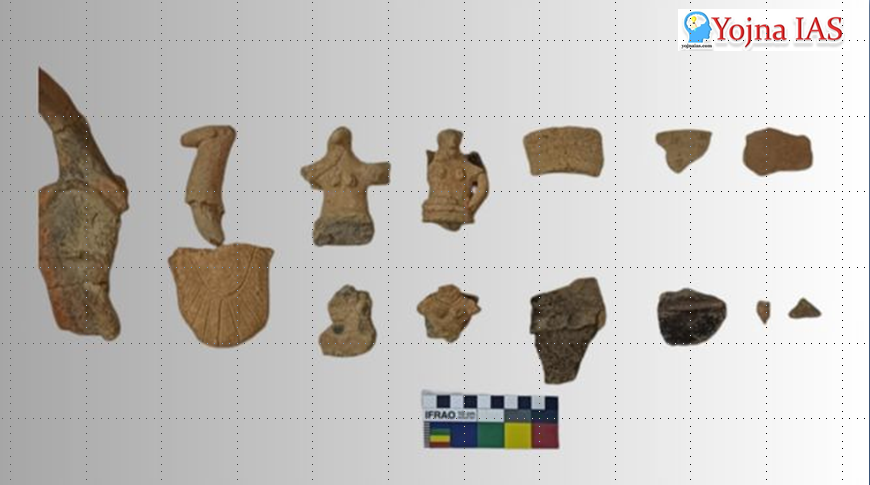14 Sep 2023 Mudu Konaje Megalithic Dolmen Site
This article covers “Daily Current Affairs” and the topic details “Mudu Konaje Megalithic Dolmen Site”. This topic has relevance in the “Culture” section of the UPSC CSE exam.
For Prelims:
What is megalithic culture?
What is dolmen?
For Mains:
GS1: Culture
Why in the news?
Recent archaeological excavations near Moodbidri in Dakshina Kannada have unearthed a diverse collection of terracotta figurines. These findings are accompanied by bone and iron fragments, shedding light on the historical significance of the megalithic dolmen site at Mudu Konaje.
About the Mudu Konaje Megalithic Dolmen Site
- The megalithic site at Mudu Konaje was initially discovered and reported by historian and researcher Pundikai Ganapayya Bhat in the 1980s. Situated approximately 8 km from Moodbidri, it was once the largest megalithic dolmen site, comprising nine dolmens on the slope of a stone hill.
- Unfortunately, only two dolmens remain intact, while the rest of the burials have been ruined over time.
Understanding Dolmens of Megalithic Culture
- Megalithic culture in India is characterised by various types of burials and the use of iron. Megalithic culture constructed large stone monuments, such as dolmens, menhirs, and cairns.
- Dolmens consist of large stone slabs, known as orthostats, arranged clockwise to create a square room.
- A massive stone slab serves as a capstone to close the square chamber. Typically, a round or U-shaped entrance, known as a port-hole, is created on the eastern slab.
- These structures are known by different names in South India, such as Kalmane, Pandavara Mane, Moriyara Mane, Moriyara Betta, Panara Arekallu, Madmal Gunda, Kandi Kone, Kottya, Toonth Kal, Pandavara Kal, and more.
Significance of Terracotta Figurines
- Out of the eight figurines discovered at the site, they include two cow bovines, one mother goddess, two peacocks, a horse, the hand of a mother goddess, and an unidentified object.
- These figurines were found inside the dolmens, though they had been disturbed by treasure hunters.
- Notably, the cow bovines found in the dolmens are crucial for determining the chronology of these structures.
- The presence of terracottas in megalithic burials provides valuable insights into the Bhoota cult or Daiva Aradhane of coastal Karnataka.
- Cow bovines or Cow goddess figurines in this context find parallels in the terracotta figurines of Malampuzha in Kerala and Egypt.
- The terracotta figurines from Mudu Konaje have been dated to the period of 800-700 BC.

Q1. How many of the following are characteristics of Megalithic Culture:
- Use of Iron
- Cairns
- Menhirs
- Urban Civilization
Select the correct code from the options given below:
(a) Only one
(b) Only two
(c) Only three
(d) All Four
Answer: (c)
Q2. Consider the following :
- Dolmens are made up of large stone slabs, that are arranged clockwise to form a square chamber.
- A triangular entrance, known as a port-hole, is typically created on the eastern slab of dolmens.
- The megalithic structures are known by the name dolmen, throughout South India.
How many of the abovementioned statements are correct?
(a) Only one
(b) Only two
(c) All three
(d) None
Answer: (d)
Q3. Discuss the key characteristics of Megalithic culture in India. Analyze the significance of megalithic burials as a source of information about ancient Indian societies.


No Comments